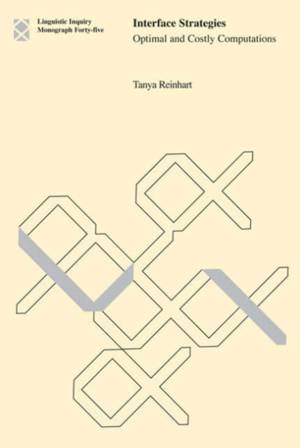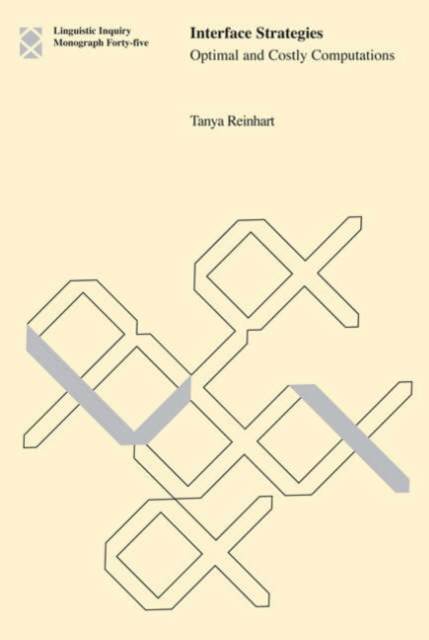
- Retrait gratuit dans votre magasin Club
- 7.000.000 titres dans notre catalogue
- Payer en toute sécurité
- Toujours un magasin près de chez vous
- Retrait gratuit dans votre magasin Club
- 7.000.000 titres dans notre catalogue
- Payer en toute sécurité
- Toujours un magasin près de chez vous
Description
In this monograph Tanya Reinhart discusses strategies enabling the interface of different cognitive systems, which she identifies as the systems of concepts, inference, context, and sound. Her point of departure is Noam Chomsky's hypothesis that language is optimally designed--namely, that in many cases, the bare minimum needed for constructing syntactic derivations is sufficient for the full needs of the interface. Deviations from this principle are viewed as imperfections.
The book covers in depth four areas of the interface: quantifier scope, focus, anaphora resolution, and implicatures. The first question in each area is what makes the computational system (CS, syntax) legible to the other systems at the interface--how much of the information needed for the interface is coded already in the CS, and how it is coded. Next Reinhart argues that in each of these areas there are certain aspects of meaning and use that cannot be coded in the CS formal language, on both conceptual and empirical grounds. This residue is governed by interface strategies that can be viewed as repair of imperfections. They require constructing and comparing a reference set of alternative derivations to determine whether a repair operation is indeed the only way to meet the interface requirements.
Evidence that reference-set computation applies in these four areas comes from language acquisition. The required computation poses a severe load on working memory. While adults can cope with this load, children, whose working memory is less developed, fail in tasks requiring this computation.
Spécifications
Parties prenantes
- Auteur(s) :
- Editeur:
Contenu
- Nombre de pages :
- 340
- Langue:
- Anglais
- Collection :
- Tome:
- n° 45
Caractéristiques
- EAN:
- 9780262182508
- Date de parution :
- 24-03-06
- Format:
- Livre relié
- Format numérique:
- Genaaid
- Dimensions :
- 161 mm x 238 mm
- Poids :
- 571 g







